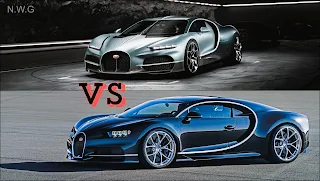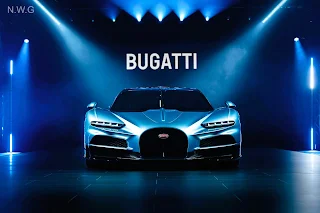Unveiling the Bugatti Tourbillon: Ushering a New Epoch of Hypercar Brilliance
In the exhilarating domain of hypercars, few marques elicit the same level of enthusiasm and grandeur as Bugatti. Renowned for transcending the frontiers of automotive engineering and luxury, Bugatti has once more ignited the collective imagination with its latest marvel: the Bugatti Tourbillon. Poised to inherit the mantle from the iconic Chiron, the Tourbillon signifies an audacious leap forward as Bugatti navigates the evolving terrain of high-performance vehicles and electric mobility.

An Unbroken Legacy of Innovation and Opulence
Bugatti's odyssey with the Tourbillon begins amidst a strategic realignment within its parent conglomerate, Volkswagen AG. Embracing a trajectory that increasingly champions electric propulsion, Bugatti allied with Porsche AG and Rimac in 2021, laying the groundwork for pioneering advancements in hypercar technology. Despite this pivot towards electrification, Bugatti resolutely honors its heritage of masterful craftsmanship and precision engineering.
Redefining Power and Performance
Central to the Bugatti Tourbillon is a revolutionary hybrid powertrain. Marrying a formidable V-16 engine with multiple electric motors, the Tourbillon produces a staggering 1,800 horsepower. This fusion of sheer power and sustainable technology catapults the Tourbillon to a top speed of 276 mph, establishing it as a formidable adversary in the hypercar arena. Significantly, this hybrid configuration underscores Bugatti's commitment to reducing emissions by 70%, exemplifying its dedication to environmental stewardship without sacrificing performance.
Craftsmanship Meets Avant-Garde Innovation
Upon entering the Tourbillon, one is welcomed by an interior that epitomizes opulence and sophistication. Drawing inspiration from the realm of haute horlogerie, Bugatti has painstakingly refined every detail, from the bespoke steering wheel embellished with intricate gauges to the seamless integration of crystal glass and aluminum in the control console. True to its legacy, Bugatti preserves an analogue charm while incorporating modern amenities, ensuring an unparalleled driving experience that harmonizes tradition with avant-garde technology.
Design Language and Aerodynamic Supremacy
Externally, the Tourbillon captivates with its unmistakable Bugatti design language. The iconic horseshoe shape, synonymous with both vintage classics and contemporary masterpieces like the Chiron, defines the Tourbillon's sleek profile. Aerodynamic enhancements, including a discreet rear wing that doubles as an airbrake, optimize stability during high-speed maneuvers, reaffirming Bugatti's commitment to performance-centric design.
Exclusivity and Prospective Horizons
Bugatti intends to produce a mere 250 units of the Tourbillon, each meticulously crafted to epitomize the zenith of automotive excellence. Slated for delivery commencing in 2026, this limited production run ensures exclusivity, appealing to the most discerning collectors and aficionados globally. While Bugatti has yet to confirm whether the Tourbillon will vie for a new top-speed record, its mere presence in the hypercar realm establishes a new benchmark for innovation and luxury.
Embracing the Future
As Bugatti charts its course into the future, the Tourbillon stands as a testament to its unwavering commitment to pushing boundaries and redefining what is possible in automotive excellence. With a blend of heritage, craftsmanship, and cutting-edge technology, the Tourbillon not only secures Bugatti's legacy but also paves the way for the next generation of hypercars.
In summation, the Bugatti Tourbillon transcends being merely a vehicle; it embodies a bold vision for the future of hypercar innovation. For enthusiasts and collectors alike, the Tourbillon promises an unparalleled driving experience that seamlessly merges power, luxury, and sustainability in a masterpiece of automotive engineering.










0 Comments